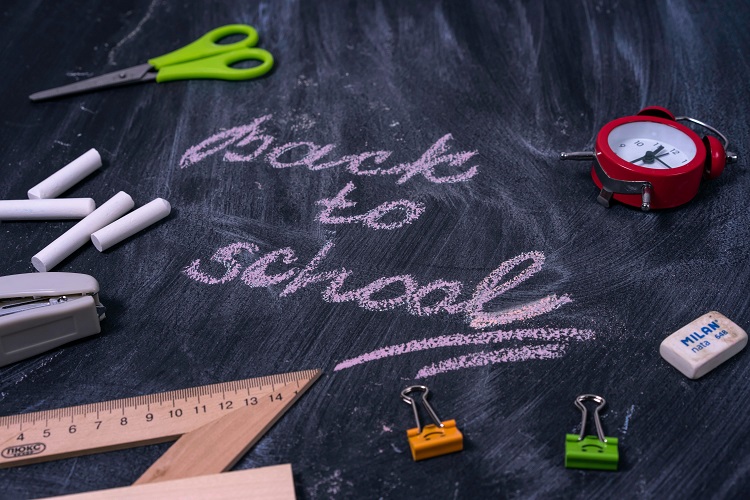
Your child may be excited about returning to school and seeing their friends but it can be a stressful and nerve-wracking time for parents.
There is more to school than shopping for supplies, such as stationery, a bag, and a pencil case. Parents are responsible for making sure their child gets to school on time, preparing their lunches, filling in paperwork, and helping with homework.
To help you and your child best prepare for the return to school, and to find out how to get and stay organised so you do not become overwhelmed, here are some useful tips for parents.
Set strategic alarms
If it is a struggle getting your child out of the house and to school on time in the morning, try setting alarms at strategic intervals.
As well as setting an alarm to wake them up, set one for 5-10 minutes before the time they should be dressed by, and 5-10 minutes before they need to leave for the bus, for example.
Streamline the bathroom
Speed up the process of getting ready in the morning by keeping the bathroom organised so that you and your child can be in and out as quickly as possible.
Keep things stored in storage boxes, crates or caddies - you could have one for each family member, but have communal and everyday products in an easy-to-reach place, such as on the back of the door or on a shelf.
This will help them to focus their time and get them out the door on time so they are not late for school, and will also help to give the morning some structure.
Organise the entry
Have a letter rack or wall organiser by the door where you can keep paperwork such as school forms, letters and other documents, or outgoing post. This will help you to remember to pick up any documents you need before heading out the door.
Also try to keep children’s school bags somewhere by the door so that they do not forget anything, along with their shoes and coats to speed things up. You could use hooks or concealed storage to keep them organised.
Have a family calendar
Use a family calendar and have it on display for everyone to see. This will help to make sure that everyone knows the schedule.
You could use different coloured pens for each person or get a calendar that has different columns for different people in the family so everyone knows who is doing what, and when and where, at a glance.
Use sticky notes or a whiteboard
For important reminders, you could write them on colourful sticky notes that are hard to miss and place them where they will be most helpful.
Alternatively, you could put a whiteboard where it is likely to be seen every day, such as by the door, near the fridge, or where you keep your keys and write reminders on here.
Have a reward chart
It can be difficult for children, and parents, to adjust their routine after the school holidays.
Try using a dry-erase reward chart to help children to keep on top of their daily tasks, chores and goals. For example, you could write: left for school by 7 am, did one hour of homework, emptied the dishwasher, or set the table.
To help motivate them, you could offer them an incentive for getting a certain number of ticks or stars on the chart in a day or week, such as pocket money or a tasty treat, or getting to pick what to have for tea one night or what film to watch on family movie night.
Plan pack lunches
Try to plan what to pack for lunch for the week in advance, and then prepare it the night before. Being prepared and having a meal plan will help to save you time and ensure that you do not buy unnecessary food items that will go to waste.
If you are struggling to come up with ideas for what to pack for your children’s school lunches, click here for some suggestions for quick and easy pack lunches.
Use labelled pouches
Help your child to keep their school bag organised with pouches for different items so they do not have lots of loose items in their bag and label them so that they can more easily find what they are looking for.
They could have a pouch for tissues, wipes and sanitary products, one for stationery, one for snacks, and another for electronics, for example.